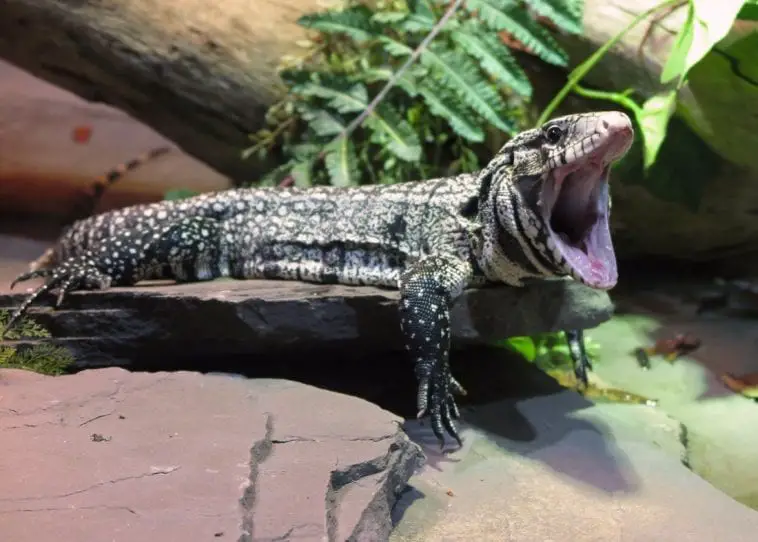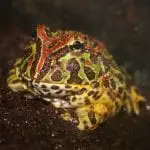Scientific Facts
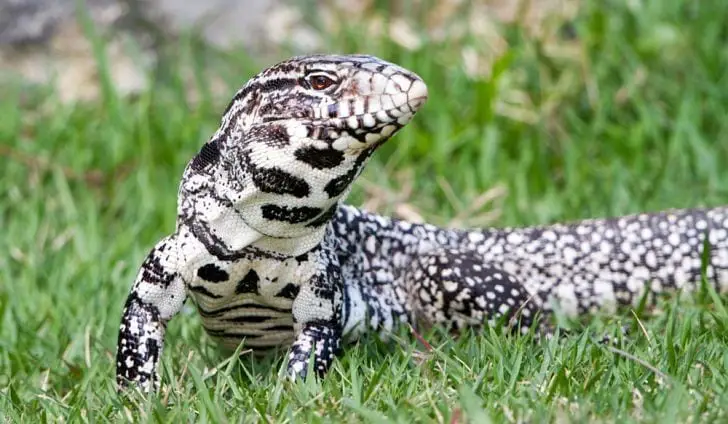
| Common Name | Argentine Black and White Tegu; Giant Tegu; Black and White Tegu |
| Scientific Name | Salvator Merianae |
| Life Span | 15 to 20 years in wild; longer in captivity |
| Size | 3 feet (females); 4 ½ feet (males) |
| Habitat | Tropical rain forests, savannas, semi-deserts |
| Country of Origin | Central and South America |
| Conservation Status | Least Concern |
Physical Description
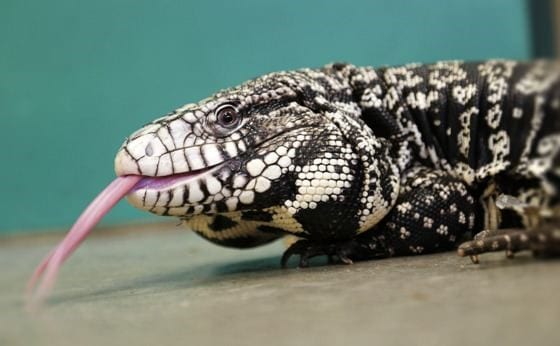
One of the best monitor lizards found predominantly in South America, the Black and White Tegu is a warm-blooded reptile which is popularly chosen as a domesticated pet due to their high intelligence and an excellent adaptation.
As its name suggests, Argentine Tegus have beaded skins with black and white color patterns upon maturation. However, they have different schemes of colors during their younger days, indicating what their ages are and evolves through the series of the molting process.
These reptiles are known to grow rapidly, with the male species growing bigger than the females with a foot apart from their total lengths. All tegus are equipped with agility and intelligence which are greatly used for their survival in the wilderness- from food hunting to the process of reproduction and evading different dangers.
Because of their knowledge, tegus are among the most preferred reptile pets in and out of the South American continents and is considered as one of the Least Concern species in the planet.
Types

No subspecies are falling under the Argentine Tegus. However, they are directly related to the other Tegus of the world, such as the Colombian Tegu. The Black and White Tegus fall under this Scientific Classification:
| Kingdom | Animalia |
| Phylum | Chordata |
| Class | Reptilia |
| Order | Squamata |
| Family | Teiidae |
| Genus | Salvator |
Despite their direct relation with the other Tegus existing in South and Central America, they have differences with these creatures. One of which is their color, as physically displayed by the Argentine Tegus, especially during their adulthood, as well as their high intelligence and the ability to be home-broken or be trained as domesticated animals. Their counterpart Colombian Gold Tegus are relatively aggressive and require a pet owner who is more experienced than the average owners.
Life Span
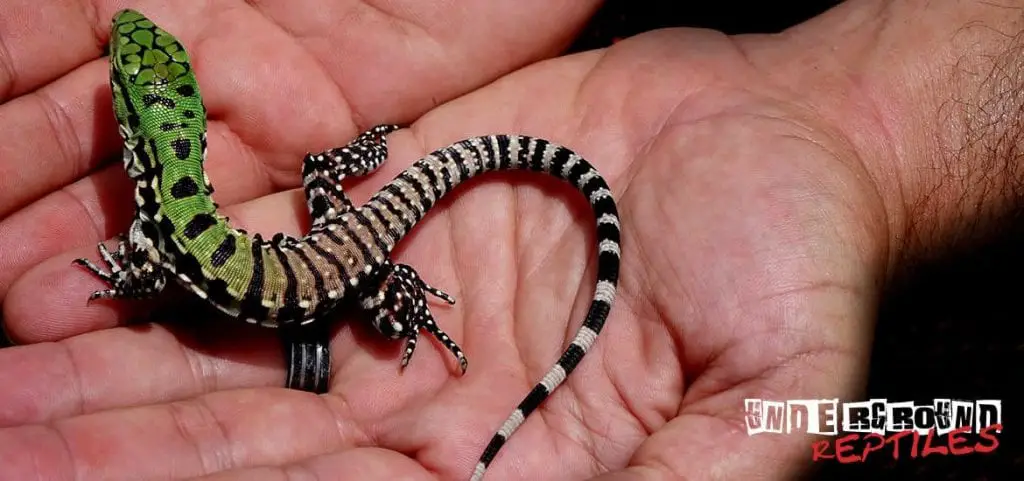
Black and White Tegus are known to live for an average of 15 years but can live longer if they are healthy enough, receives sufficient nutrition and live in an ideal habitat, far from predation in the wilderness.
Due to their reptilian oviparous nature, they share the same life cycles with the other lizards of the modern world:
Egg Hatching
After mating during the Breeding Season, Argentine Tegus lay eggs in an ideal nest, 10 days after their breeding process. A female tegu can lay up to 30 soft eggs in one season and will lay another volume of eggs in another year. The female tegus are known to keep the moisture of her nest through water regurgitation. These dented eggs harden after days of incubation by their mother tegu.
After incubation, it is expected that the eggs will hatch within 40 to 120 days or 1 to 4 months.
Juvenile Period
After coming out from their eggs, young tegus have this distinct green color from the tip of its snout up to its neck and has bands of yellow and black on its tail. They have also developed their black marks throughout their skins, indicating their natural color upon maturation.
These youngsters grow rapidly with an average growth on more than an inch every week. It is in this time that the Argentine Tegus feast on small insects and animals and learns in the methods of survival if born in the wilderness. They are rapid in moving and is known to be playful at times.
Adulthood
As the young tegus grow to adulthood, their color changes from emerald green and black into white and bands of black. This is their trademark color and differentiates them physically with the other species of tegus roaming in South America. Their bands of black go fewer, and their color creates a more vivid pattern.
A portion of their tails can be dropped if they have been directly attacked, to divert the attention of their predator to the fallen tail. However, the dropped portion of their tail will never be replaced with the same quality again.
It is in this time that they have developed their appetite for fruits, thus becoming omnivorous, feeding on meats and fruit-bearing plants, as a great way for them to survive. Despite their size, Argentine Tegus are not territorial and often hides in big rocks and other shelters to live peacefully while in the wilderness.
However, they can be aggressive as the breeding season comes closer or the female tegus build their nest for her future hatchlings.
Eating Habits
As mentioned, Argentine Tegus are known to be omnivores, often eating on insects and smaller animals which they can chew and digest. They feed on rodents, insects, other smaller reptiles and amphibians such as the turtle eggs, and the wild fruits available in the forest.
During their younger days, these tegus are known to be meat-lovers, feeding only on rats and grasshoppers, beetles and butterflies, spiders and other arthropods. As they grow older, they develop their eating discipline in taking fruits and plants as part of their regular diet, giving them more and better options on which food to eat.
Despite this eagerness to eat more and grow more, one should know that the climate and temperature affect their digestion and development, making the tegus eat more in a specific year only, and eat less in the rest of the years.
Sleeping Habits
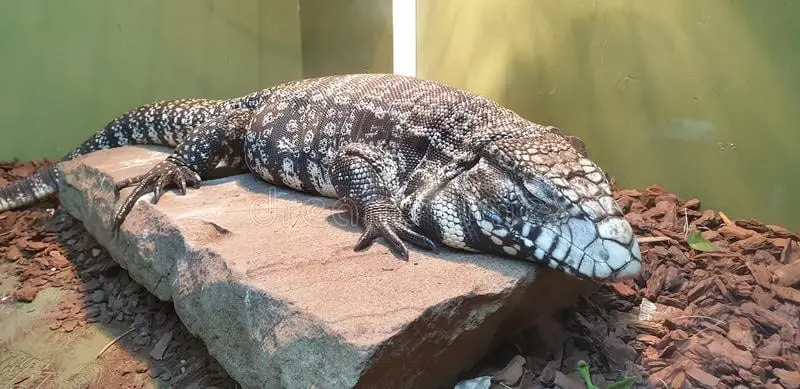
Argentine Tegus are known to be diurnal animals, taking their daily activities predominantly done in a daytime setting more than making things done in the night. Their body strictly follows the 12-hour light cycle period, allowing them to sustain better body conditions, compared with the other lizards active at night.
About the sleeping habits of Argentine Tegus, one must remember that the geographic setting of the place where they live primarily affects their way of sleeping, considering that Argentina experiences four seasons, just like the United States. However, their winter season happens every June to August, and their summer commences on December, thus joining Australia with their Summer Christmas.
Development and Reproduction
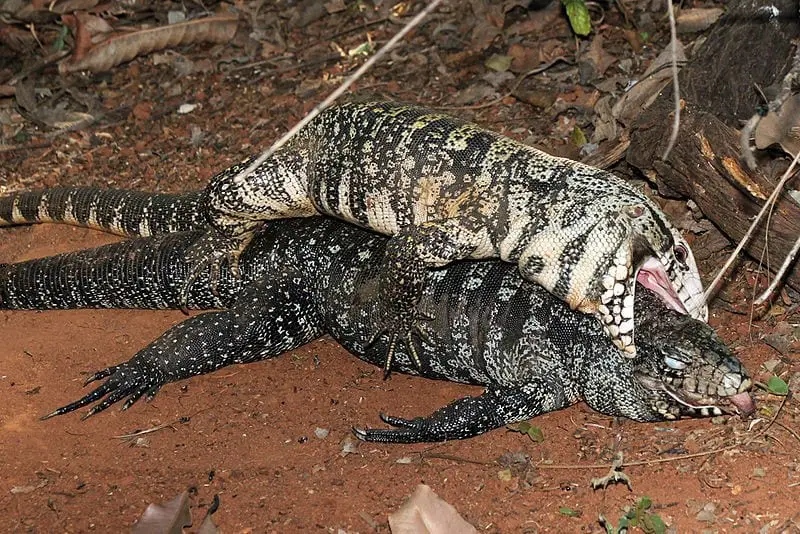
As mentioned, Argentine Tegus grow fast and manage to live for longer years, compared with the other reptiles. Their Sexual Maturity ripens up as soon as they reach their 3rd year of existence. Upon reaching this moment, they are already considered as adults, capable of reproducing, either sexual or asexual.
Another unique characteristic of an Argentine Female Tegu is that she may not need to mate with a Male Tegu as they can reproduce their eggs on their own. This ability of asexual reproduction has been developed over the years due to the imbalance distribution of male to female tegus, often leading to scarcity of male tegus. This imbalance is credited to the biological evolution of all tegus throughout the years, favoring the female genetics to excel more than the males, considering their geographic location in Argentina and South America.
After the said reproduction, a female Tegu will dig her unique 2-chamber nest-first is for the eggs, and the next is for herself, creating another unique behavior of tegus, relative to the incubation and growth of their hatchlings. The egg chamber should always be the deepest point of her nest, considering that the eggs have soft shells, needs to be heated for weeks, and are highly vulnerable to all predators in the wild, obliging the female tegus to incubate these eggs by her own and be aggressive in protecting the eggs until they hatch and live on their own.
Behavior
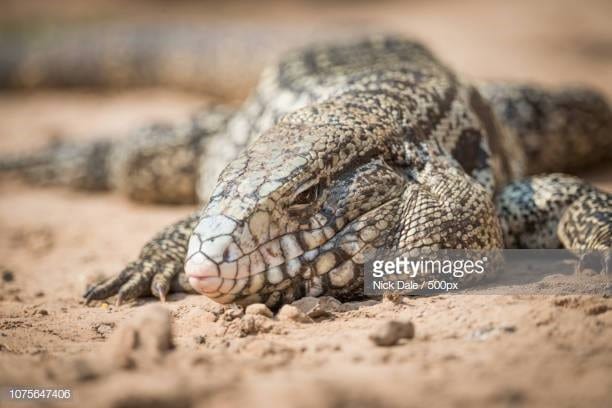
The best asset of the Argentine Tegus when it comes to their behavior is their intelligence. They share similarities with domesticated cats, especially on how they should be treated if considered as a pet in different homes.
Like the owls in the air, they are wise enough to create tactics on how to catch their preys easily, as well as creating their homes and their unique 2-chambered nest.
They also highly use their skins in effective camouflaging against their bigger predators, roaming in the wilderness of Argentina and neighboring countries. They are diurnal species, and this body clock allows them to be tolerant with the other tegus sharing the same struggles with them, working and living under the broad daylight, with high possibilities of being chased or killed, as well as face the scarcity of the food at times, especially during the Fall Season, where every animal start to hibernate and sleep for 2 to 3 months.
The only time that these animals tend to be aggressive is during the mating season, where male tegus find for their perfect partners and the female tegus carry the burden of making their own nest and to protect their babies even if it costs their lives. Though they are known to be wise and less wild than their cousin Colombian Tegus, the Argentine Tegus are easily stressed and may turn to be defensive at all times.
Health Conditions
Argentine Tegus are also susceptible to different health conditions that can be acquired while both living in captivity or the wild. These illnesses develop during the times that the owners or the tegus themselves neglect the importance of their Immune System in fighting diseases.
Metabolic Bone Disease
Your Argentine Tegus may experience a serious illness where they grow thinner, have puffy jawlines, and develop weak legs. This is considered as Metabolic Bone Disease. Despite its serious condition, one can simply help the Tegus recover from this illness by sustaining a stable source of UV-B rays in the enclosure of your animals. Apart from UV exposure, they should eat superior nutritious foods to keep their skeletal and muscular strength in stable and increasing conditions.
Calcium and Phosphorus Deficiency
Calcium and Phosphorus are highly essential for your tegus, considering that they have to sustain a strong skeletal frame for their energetic bodies. This deficiency is caused by lack of sunlight exposure, knocking the immune system of your tegus down and let them suffer from a painful disease that restricts them in moving and eating, which in return, could make a fatal state with a tegu.
Salmonella
Aside from humans, Argentine Tegus have high risks of dealing with Salmonella in their bodies. This bacterial infection is caused by unsafe food, contaminated with fecal discharges just like the chicken eggs, which are fed to the tegus. All eggshells may contain these bacteria as they have come from a hen’s womb and has been laid with fecal contacts. If ignored, your food preparation for your tegu may trigger the last moments of their lives.
Preventing Illnesses
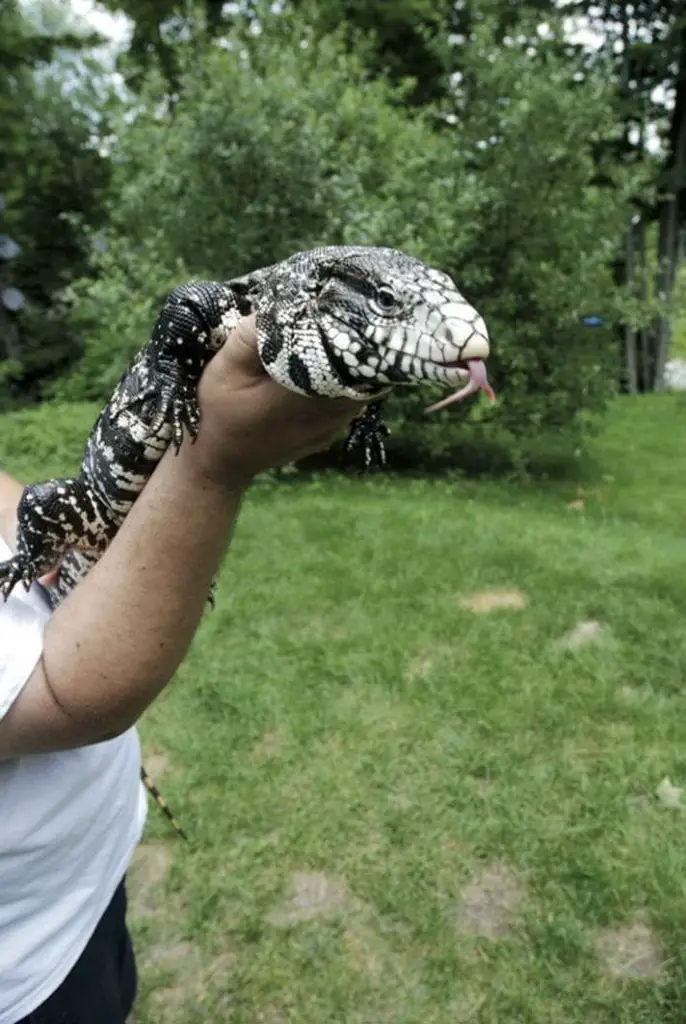
The best way of preventing illnesses with your tegus are through physical and sanitation compliance on how they must be treated, especially if an individual is going to be a first-time tegu owner.
Food, Water, and Nutrition
Argentine Tegus will demand nutritious food, aligned to their food preferences, from the rodents, up to the fruits that they must eat from time to time. A pet owner must be sure to keep the sanitation and quality of the foods that he or she will give to these animals are efficiently monitored and checked to avoid contamination and infection. Also, it is a requirement to change the tegu’s water supply regularly to keep the safe condition of water sources at all times.
Lighting
Argentine Tegus need adequate lighting with exposure to UV rays to help them develop their strong bones and muscular growth, knowing that these animals are diurnal and love to be exposed with light for their well-being.
Temperature
Keep their ideal temperature at all times to avoid any stress that they may feel like the temperature changes to both lower or higher notches. They are sensitive with this condition, provided that they are reptiles. Despite their endothermic condition, they still need the proper heat regulation for their bodies to keep an active and healthy lifestyle.
Hibernation
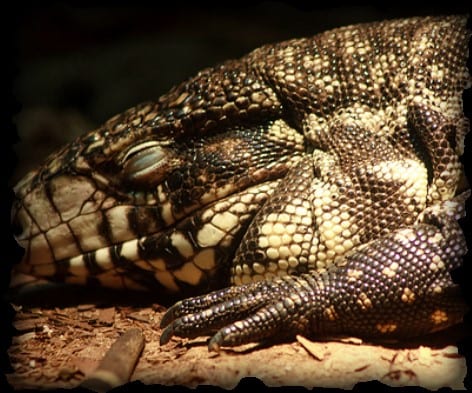
Argentina and the other patches of South America experience the four seasons annually. With this setup, the Black and White Tegus have adapted with this climate through brumation.
Brumation is the reptilian way of hibernating during the winter season. During this time, Argentine Tegus are lethargic and completely stops in doing any daily activities to save their body in sustaining colder temperature, which is hard to eradicate in the middle of a winter season.
It usually takes seven months for an Argentine Black and White Tegu to complete this cycle, thus making much of their time sleeping within a year. Despite captivity, the experts have discouraged owners in prohibiting their tegus undergo this biological process as this will help them to live longer and save their energy during long cold winter nights, where the sunlight is nowhere to find.
Shedding
Just like the other reptiles, Argentine Tegus experience skin shedding or molting. All of the reptiles experience the molting process to bolster their growth and development for the future years.
The challenge in taking care of tegus is that they shed more when they are younger and needs a continuous process to allow their young bodies to grow more. To assist them in shedding, it is necessary to keep the moisture of their enclosure be in higher volume and mist their bodies to keep the process smoother and faster. It has been proved that the Argentine Tegus shed their skin faster in a more humid place, allowing their old skin peel with lubrication, like how the snakes need to be hydrated and humidified during their molting processes.
After shedding, one must clean the molting area to keep the old skins away from them, maintaining a clean space for the tegus and make them avoid eating their old skins which may carry different bacteria.
Habitat
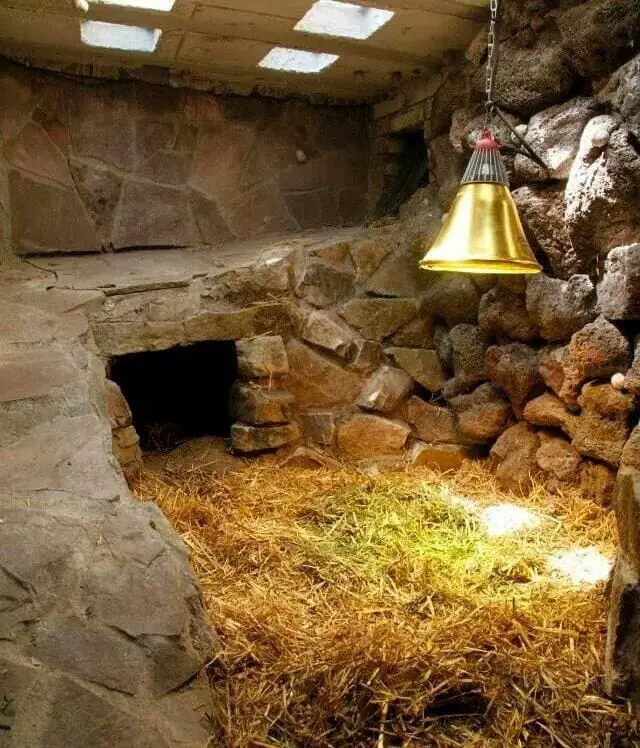
All tegus live in Tropical rain forests, savannas, semi-deserts located within the realms of South America. Due to human intervention, these tegus became invasive species in Florida and the Southern United States that share the same ecological setting with their original home in the South.
Their black and white patches perfectly blend with the grassy and wood-rich areas of the forest, keeping them covered for predation and protection at the same time. In captivity, it is highly recommended that the Tegus live in a relatively large tank to give way for their active lifestyle, especially during the morning and afternoon, where they are expected to bask for sunlight and be playful in the cage. If you have a room for their enclosure, then it is better for them, especially that they grow fast and are smart enough to run away if you set their enclosure outside of your house.
It is also advised that when they grow older, they should be exposed in the other parts of your home for some strolling moments and roam for familiarization.
Lighting and Humidity
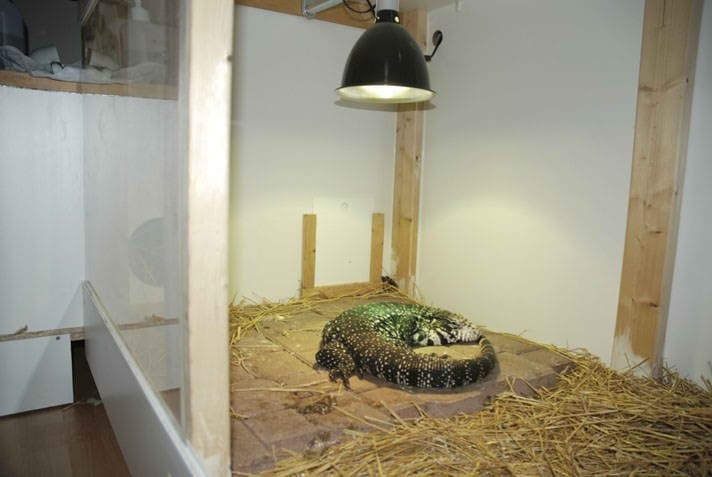
The adequate light to be used for your tegu must be coming from the natural sunlight, as much as possible. However, due to some restraints in captivity, it is recommended to use lamps with UVB rays to suffice the shortage in direct sunlight. In a 4-feet enclosure, one should provide a basking spot of 12 to 18 inches wide for better tegu lighting.
Also, keep the humidity inside the cage from 60% to 80%, just like how the South American forests, like the Amazon, have their forest humidity that favors these reptiles.
Remember that the lighting must be concentrated with the basking spot with only partial illumination to the rest of the tank. In this way, the tegus are prevented from sustaining burns and other painful skin problems that may affect their daily activities.
Temperature
The ideal temperature inside a tegu’s cage must range from 80 to 95 degrees Fahrenheit in the morning, 95 to 100 degrees Fahrenheit in the noontime, and 75 to 85 degrees Fahrenheit at night. The basking site must be the hottest part of the cage, with the temperatures ranging from 125 to 135 degrees Fahrenheit. The conversion of temperature is listed as follows:
| Time/Place | Fahrenheit | Celsius |
| Morning | 80 to 95 | 26 to 35 |
| Noon | 95 to 100 | 35 to 37 |
| Night | 75 to 85 | 23 to 29 |
| Basking Spot | 125 to 135 | 51 to 57 |
Tank Bedding and Accessories
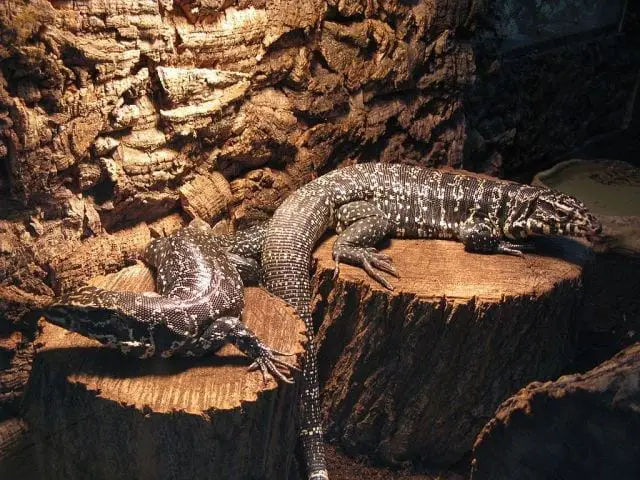
It is best advised to keep the tank spacious to have a great room for your active Argentine Tegu. It should be avoided to have some branches that can be stepped on by the tegu to avoid breaking out from the cage. Also, it is highly recommended to imitate its original habitat with a forest theme inside to make the tegu more comfortable in living. Avoid overpopulation as the tegus have rapid growth and development, thus creating a lesser space to roam and more stress for the tegus.
Keep the tank bedding a bit soft and stable for these massive lizards. One can choose cypress mulch, coconut husks, or orchid barks to cover the entire beddings and reduce the gripping force of the tegu’s legs while standing on a corner and go closer to its basking spot.
Consider putting natural plants inside that can cover the tegu at times if it can feel any danger or territorial evasion on its surroundings. Also, consider putting some piles of rocks for imitating its natural burrow during the brumation cycle where it can hide and rest for months.
Sanitation
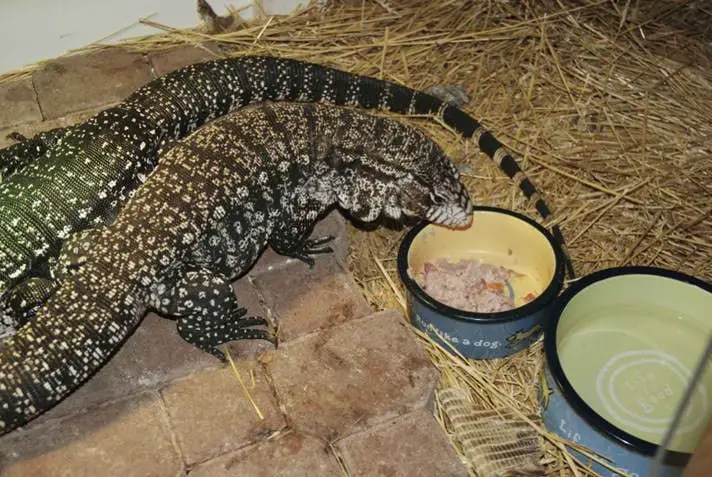
In keeping the cleanliness of the tank, it will always be a challenge for you to check all of what’s kept inside-from the materials you included for imitating a tegu’s habitat, up to the regular water replacement. Also, be keen on developing some fungi or molds inside the tank as it can make your tegu sick at times.
They react with the tegu’s body negatively, mildly poisoning your pet and even giving it a headache with the diseases it can bring.
Keep the discharges of your tegu thrown away at all times. Make sure to keep your tegu off from its poop as it can be eaten by your clever pet and will damage its digestion in the future.
Also, check the electricals applied for the large enclosure. Keep your wirings and the lamp itself, away from the tegu as they may play with it and get electrocuted.
Availability
Despite their status as invasive species in Florida and the nearby states, the Argentine Tegus are highly regarded as one of the best reptilian pets in the US due to their tamed behavior. This has captivated the numerous pet shops in the said region, making them readily available with a high number of a population good for legal, commercial trading.
Taking Good Care of Tegus as Pets
As mentioned, the Argentine Tegus behave like domesticated cats when kept as pets. Having this primary trait, a pet owner must consider the following steps in taking good care of Argentine Tegus:
- Avoid too much carrying of the tegus for they do not like being carried at all. Instead, let them walk and roam freely as they observe their new surroundings and get familiarized with your house.
- Do not let your kids play with the tegus alone. They have high tendencies of being snappy when too much physical contact is applied to them, especially with their tails.
- Do not let your tegus eat foods with uncertain sources. As much as possible, let them eat live insects and fresh fruits, with no sprayed pesticides or other chemicals to preserve their freshness. Let them feast on organic foods.
- Do not cut their nails as the sharpness of their nails help them in creating powerful grips on branches and on the ground.
- Do not let your Argentine Tegus sleep with other animals in your home as they may acquire viruses from the said animals and make them fatally ill.
- You may pet your tegus, provided that they have to be kept on the ground. Avoid handling their tails, as well as their limbs and nails to avoid discomfort and sudden aggressiveness.
- Love your tegus like how you love your cats or dogs.
FAQs
Can I pet my tegu?
Consider petting a cat. At times it loves to be touched and sometimes not. The same applies with an Argentine Black and White Tegu as they may find it uncomfortable to carry their body with your arms and accidentally scratch you with their sharp and probably bacteria-infested nails.
The good thing with them is that they love to be touched if placed down on the grounds and let them walk around.
Do a tegu’s bite painful?
Yes, of course! Its lethal bite can kill all of its preys on its first bite. Its powerful jaws can create a pressure of up to 1000 Newtons. To simplify these things, a single bite of an adult Argentine Black and White Tegu is of the same force with a large trained dog. Do not attempt to make your tegu feel bad, it can destroy your hands in a single bite.
Is tegu poisonous?
Having mentioned about its power to bite, the good thing with the tegus is that, they are not poisonous. Unlike the other reptiles, they have no toxins embedded with their teeth and mouth, but the way they kill their preys are excruciating, more painful than how pythons wrap their victims and strangle to death.
Can I train a tegu?
Argentine Tegus alone, are considered the brightest lizards of the modern times, far from its cousins Paraguay Red and Colombian Gold Tegus. As mentioned, their level of intelligence is the same with the cats, and this can help you train them efficiently with time, just like when to eat, where to drink, where to poop, fetch a ball, and other basic tricks.
Can I store up to 5 tegus inside a cage?
Depending on the size of your cage, you can store this number of tegus inside a common cage. However, the size of their cage must be a room big to avoid confrontation with the other tegus, especially when they are hungry or when the time of breeding season comes, where all animals become aggressive and thirsty for mating.
How will I separate the newly laid eggs from a mother tegu?
First, catch the mother tegu, which is highly aggressive in watching for its babies. After catching the mother, gently get the eggs one by one. Avoid rotating it from its sides and keep it in a container with a warmer temperature.

